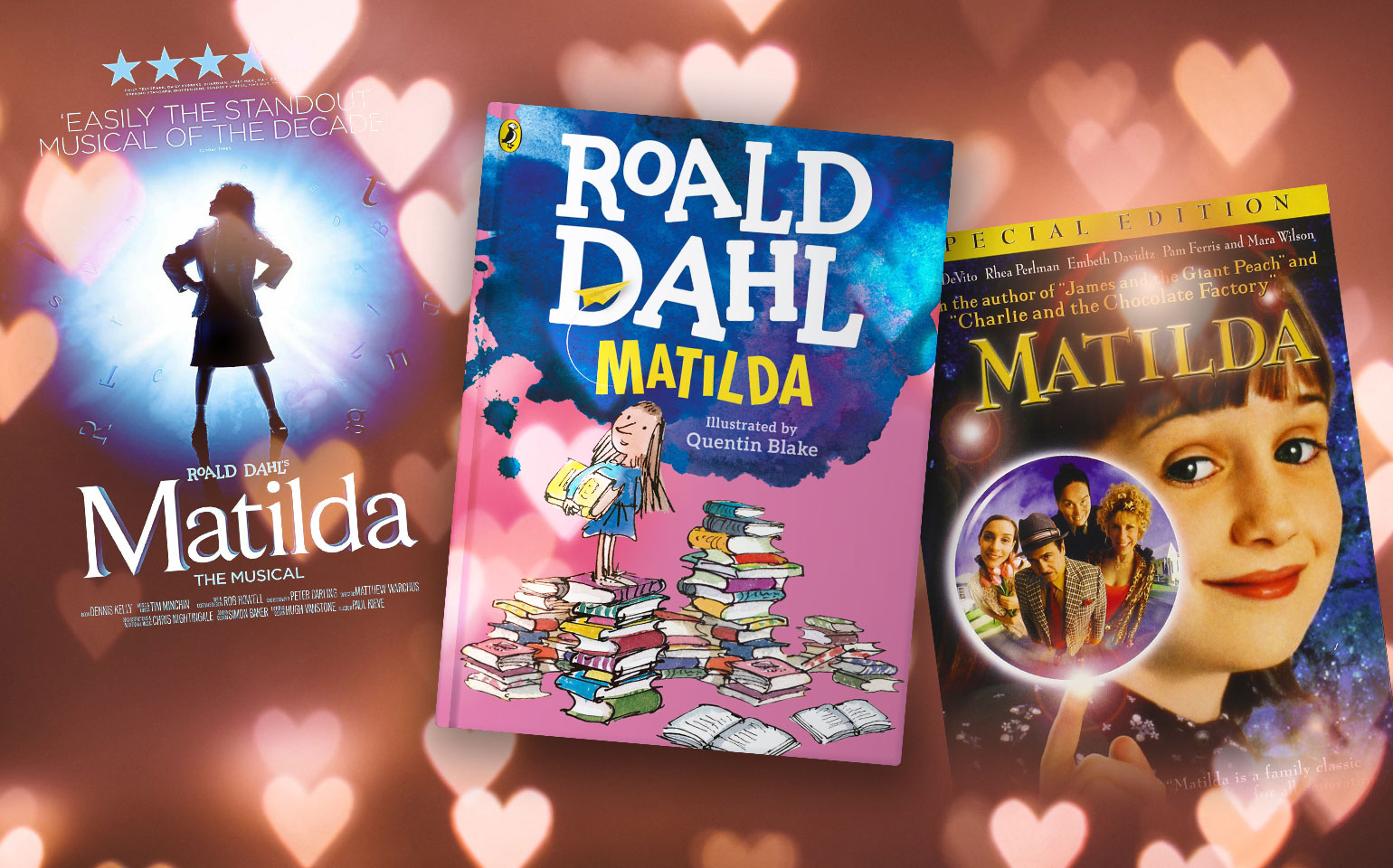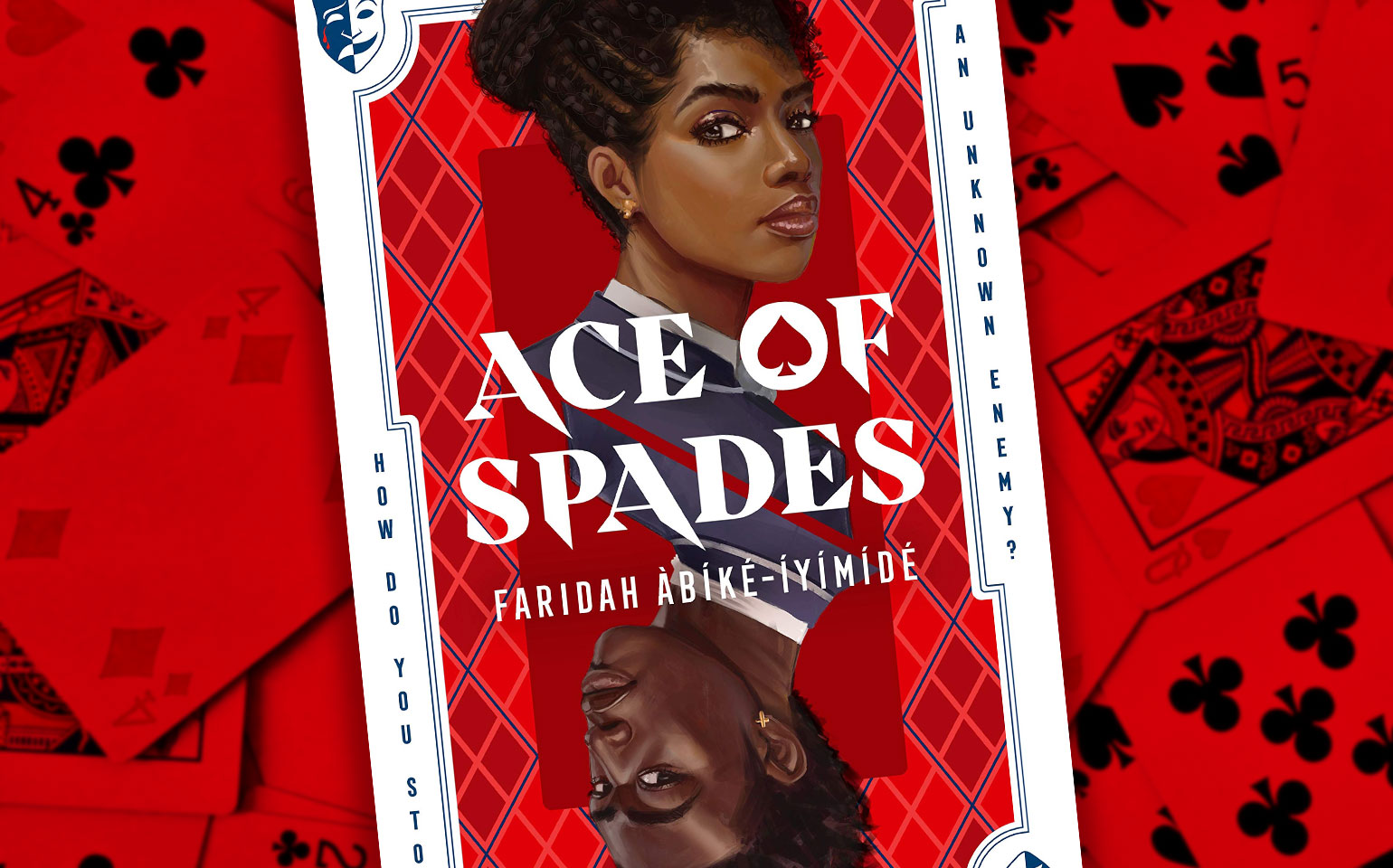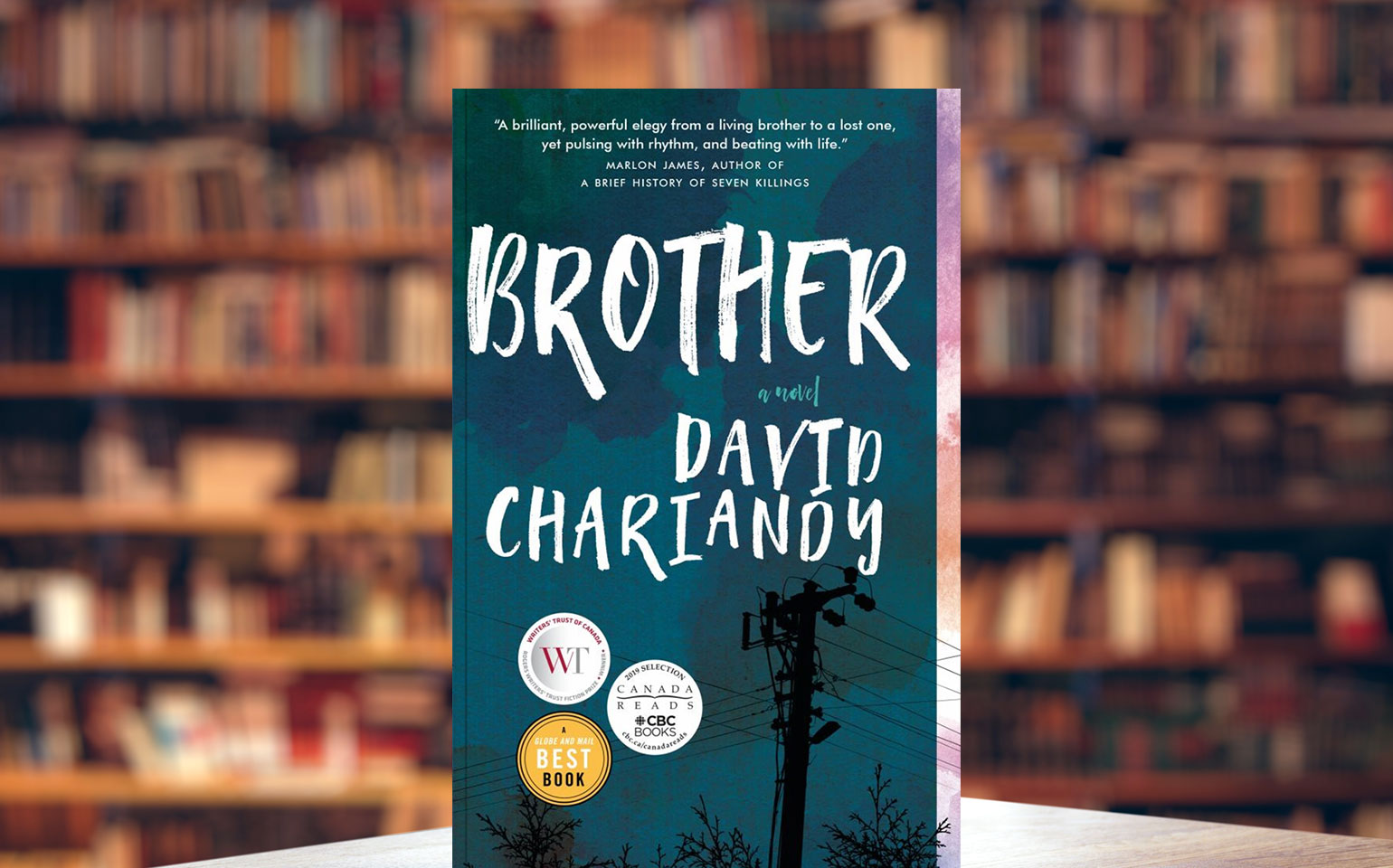
The Many Ways I Fell in Love with Matilda
“A strange feeling of confidence and serenity swept over her and all of a sudden she found that she was frightened by nobody in the world.” – Matilda (Roald Dahl, 215).
Have you ever loved a story so much, you love every version of it? That’s exactly how I feel about Matilda.
Matilda, the beloved children’s novel by Roald Dahl, was first published in 1988. Since then, it has had a lasting impact on pop culture, becoming an iconic franchise that inspired numerous adaptations. With each new version I thought, “nothing could top that!” In a way, nothing could. Each adaptation gave me a refreshingly different perspective and spin on the much-loved familiar story. Like your favourite food, but with a surprise twist each time you eat it.
Matilda’s Family:
In all the adaptations, Matilda’s parents are portrayed as mean and downright abusive. While the book gives a good description of Matilda’s parents, it’s the original movie that shows us how terrible they really are. Danny Devito and Rhea Pearlman are extremely memorable, managing to accurately convey the sleaziness of their characters. However, we don’t get to see enough of this in the musical film, since Matilda’s parents have very little screen time.
On the other hand, Matilda’s brother Michael is different in every adaptation. In the book he’s a background character while the movie gives Michael a more antagonistic personality. However, in the musical film Michael is removed entirely, leaving Matilda as an only child.
Within each adaptation, Matilda is shown to have a strong relationship with one of her family members. In the book this applies to her brother, who even waves to her as Matilda’s parents drive away in the final chapter. In the movie, Matilda seemed closest to her mother. Mrs. Wormwood appeared to love her to some degree, keeping her distance due to their differences and because she was unsure how to be a good parent.
In the musical film, when Mrs. Wormwood gave birth, she was in complete denial, borderline appalled about becoming a mother. Her father, on the other hand, seemed initially excited, bringing balloons and stuffed animals as gifts. However, the song “Miracle” explicitly shows that his mood quickly soured upon discovering Matilda was a girl. Matilda’s parents’ sentiments regarding having a daughter is expressed in the line: “why do bad things happen to good people,” implying their disbelief at how this horrible thing – Matilda, a daughter – had happened to them.
Miss Trunchbull:
Agatha Trunchbull is the fearsome, muscular and formidable headmistress in Matilda’s school. But did you know that she was a teacher in the original novel? Both the movie and musical promoted her to headmistress giving her more authority, bringing her reign of terror on both teachers and students to a whole new level.
In the 1996 movie, Trunchbull is played by Pam Ferris, who is easily the most iconic version of the character with her intimidating appearance and violent tendencies. Ferris brings the character to life in a way that other adaptations couldn’t, her portrayal embodying the character fully, bringing many childhood fears to life. Like usual villains and bullies, Miss Trunchbull enjoys her power. She effectively exhibits chilling, psychotic joy when abusing children with terrorizing weapons like the Chokey. Her tyrannical demeanour and raging outbursts became a source of nightmares for many children for years to come.
This does not take away my love for the casting of Emma Thompson as the new Miss Trunchbull in the movie musical. However, the process of using body suits and prosthetics to transform her into Miss Trunchbull raised controversial body dysmorphia issues from both fans and critics. They also found the use of bodysuits as discrimination against plus-sized actors while some expressed that the reliance on heavy prosthetics made her look cartoon-like. Her fame from previous roles may also have made it initially hard to imagine her in the role, however this didn’t affect my opinion.
For me, she’s not only believable as Miss Trunchbull, but manages to embody the character and succeeds in making it her own.
The Musical Numbers
Of course, the major differences between the musical film and the other adaptations are the musical numbers. Personally, I found the musical film to have the most satisfying climax and resolution because of the songs they included. The soundtrack helped set the overall tone to be more whimsical and expressive compared to its predecessors. While the original movie and book are more focused on Matilda and the adults, the musical was meant for the rest of the kids. It covered a broader scope, speaking about childhood fears, abuse, trauma, and relationships. This is showcased in the musical number “When I Grow Up,” where we see the perspectives of various children, how they’re repressed, and how they look forward to being adults so that they can stand up to their fears and oppressors when they’re older.
“When I grow up… I will be brave enough to fight the creatures that you have to fight beneath the bed each night to be a grown-up.”
We can see the children’s emotions in other songs throughout the musical film like “School Song” where the children are trying to warn Matilda about Miss Trunchbull. We also see it in “Revolting Children” where the children triumphantly stand up to Miss Trunchbull. This is why I like the ending of the musical film best, because here we see the emphasis that Matilda is not the only one being freed.
Concluding Thoughts
Even though all the adaptations of Matilda tell the same story, I’m impressed by how each one manages to keep the core story intact while still reshaping it in a unique way.
The book is simple and great for introducing readers to the story. The plot doesn’t have as many dramatic scenes as the other adaptations, because at heart it is focused purely on the goal of giving Matilda a happy ending. Quentin Blake’s illustrations are charming and plentiful, easily found scattered throughout the book. I particularly love these drawings because the style makes it easy to picture what is happening, while being vague enough to leave a lot up to the imagination.
The 1996 movie is very nostalgic for me, having its own charm of being the first to introduce Matilda on screen. I found the casting for this adaptation to be the best, bringing their characters to life. This adaptation also perfectly executes its comedy and over exaggerated scenes, making it successful as a children’s movie.
The musical film, of course, is most known for its amazing soundtrack. I love that each of the songs are extremely unique, the tones ranging from whimsical to fearful, encouraging, mischievous, and have many different meanings as well. Overall, I find the musical goes deeper into the story, dealing with a broader spectrum of emotions and issues. The cast in the musical was also much more diverse compared to the 1996 film. I surprised myself by loving both versions of Miss Trunchbull, and Lashana Lynch is now my favourite Miss Honey.
I can’t possibly pick a favourite among these versions, but the good news is… you don’t have to, either. You may choose to start with the book, or maybe your love for songs leads you to the musical. Perhaps afterwards you’ll want to compare it to other adaptations like me. I guarantee each version will leave you longing for more.



